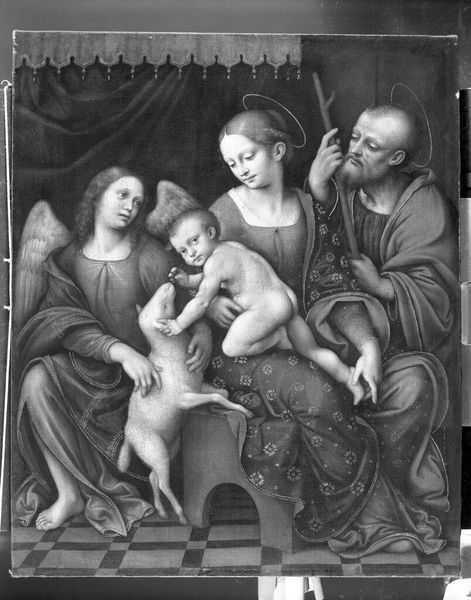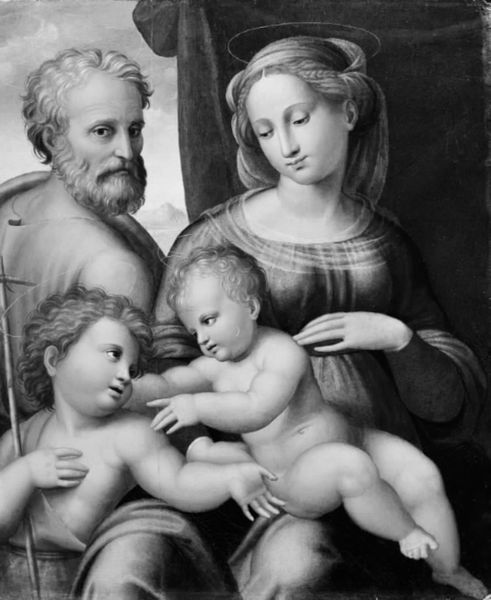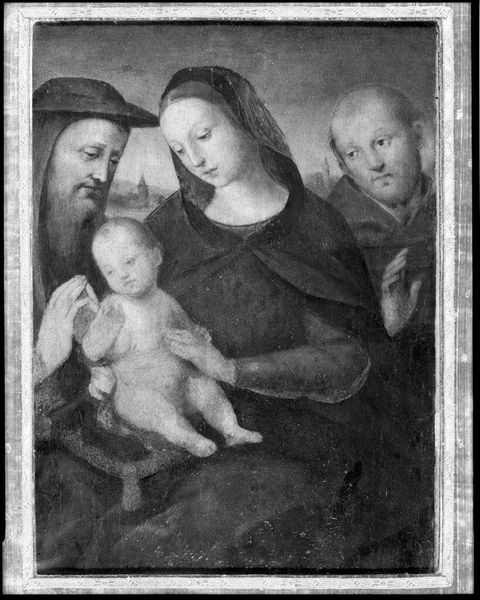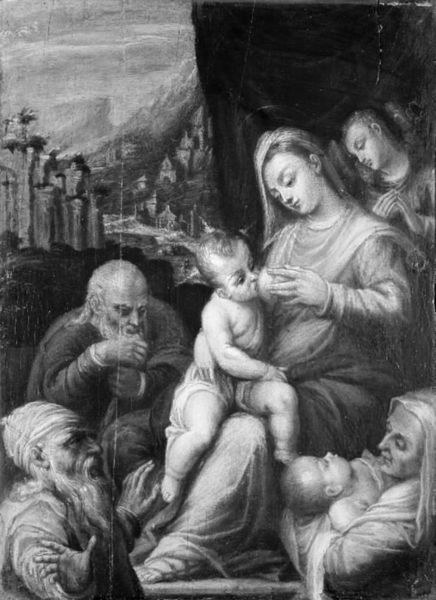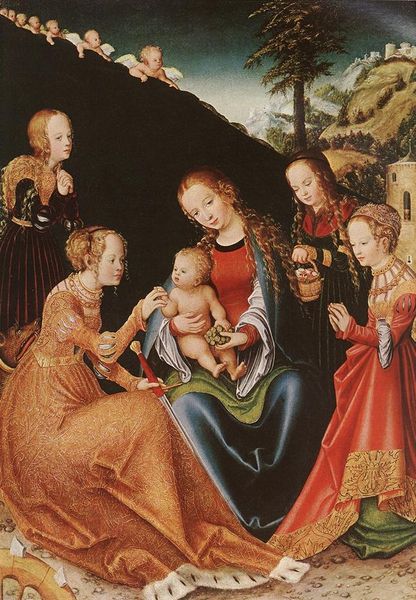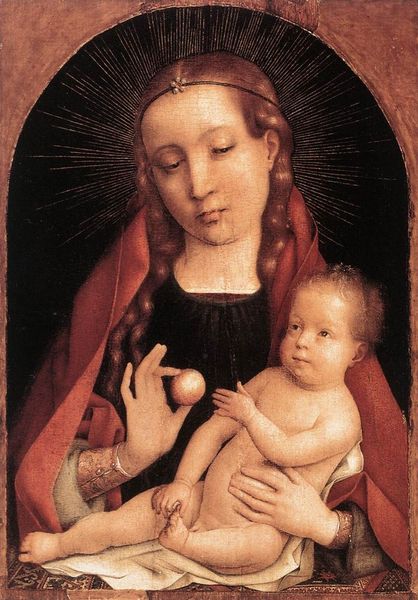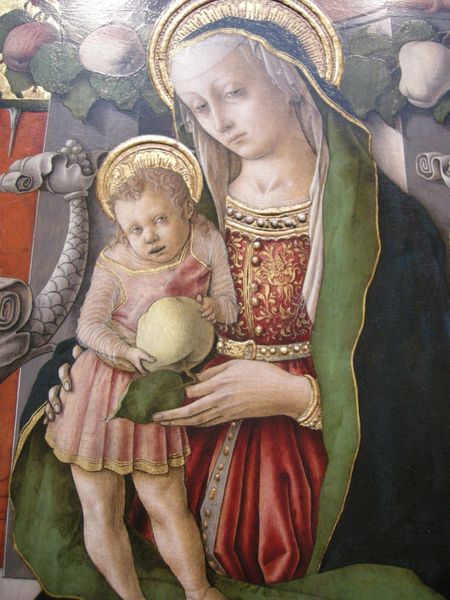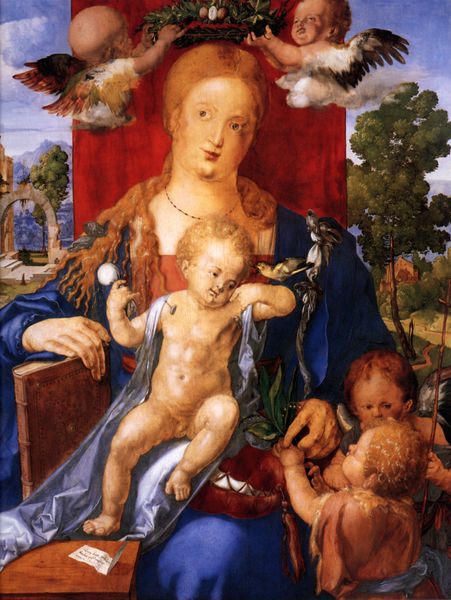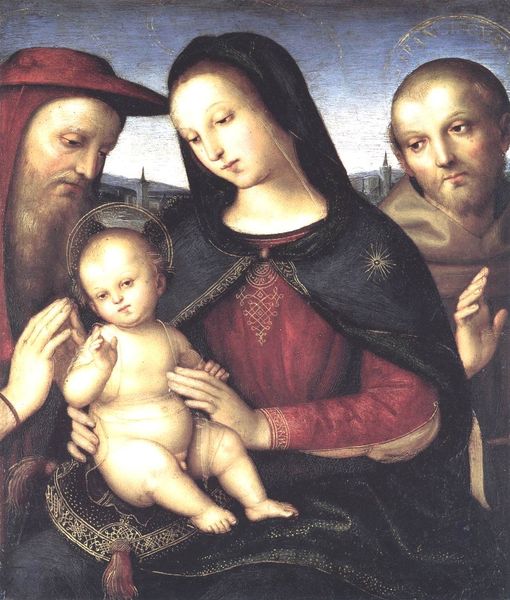
Madonna and Child with Saints Jerome and Francis 1495 - 1505
0:00
0:00
painting, oil-paint
#
portrait
#
portrait
#
painting
#
oil-paint
#
figuration
#
madonna
#
child
#
italian-renaissance
Dimensions: Overall 24 5/8 x 16 3/4 in. (62.5 x 42.5 cm); painted surface 23 5/8 x 15 7/8 in. (60 x 40.3 cm)
Copyright: Public Domain
Curator: Look, isn't it interesting that the Metropolitan Museum of Art holds "Madonna and Child with Saints Jerome and Francis", dating from between 1495 and 1505? I'm struck by its somber, almost severe mood, despite the tenderness inherent in the subject. The muted palette certainly contributes to that feeling, as does the Madonna’s unwavering gaze. Editor: The first thing that hits me is how the textures speak to a very specific cultural moment. The weight of those robes, the roughspun quality, the delicate weave around the Madonna’s face—you sense the materiality of labor. Those pigments didn't magically appear. Who ground them? Where did they source the oil for this piece? These are the unsung parts of art history. Curator: Precisely. We observe here, with rigorous articulation, a composition organized along a clear pyramidical structure—the apex being the Madonna's head. And, dare I say, this is not simply visual; it reinforces the semiotic weight of the image, hierarchically ordering the figures to elevate Mary above earthly saints. Editor: Though, in truth, "elevate" is perhaps overstating it, considering the flatness of the painting. The social structure of the piece flattens right alongside the art; note how the Madonna's cloak seems to emerge almost directly from the darkness. Consider also the practical side: Was it a commission? A devotional object for the home? This informs everything from size to use of pigment, to the skill and type of labour expected in rendering Saint Jerome’s beard. Curator: A vital element in these devotional works is also what is deliberately suggested through iconography: The lion represents Saint Jerome's association with translating the Bible, subtly adding a dimension of intellectual weight to this painting. It's as if the artist—unfortunately, currently still considered Anonymous—carefully plotted not merely what the eye sees but what the mind perceives. Editor: Anonymous indeed! This underscores a very material point, no? This piece likely was a workshop production, reflective of guild economies and division of labour rather than pure genius alone, perhaps? Understanding artistic production means accounting for the apprentice who laid in the base layers. Curator: I appreciate your viewpoint; however, my initial observations allow one to see clearly that its artistic power transcends its materials and its context— the lines converge in its purest form, shaping how it remains, until now, eternally affecting those that look at it. Editor: And yet, the materiality reveals how art functions inside a system; its production is never neutral and never without inherent political choices about who gets to create and how that creation is sustained.
Comments
No comments
Be the first to comment and join the conversation on the ultimate creative platform.
